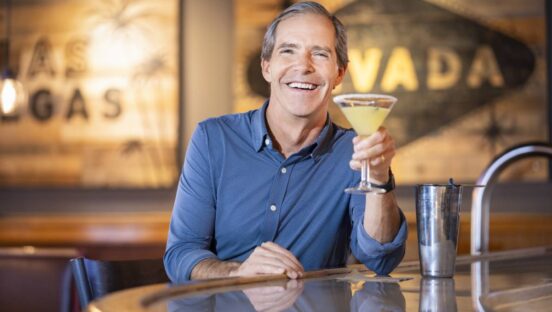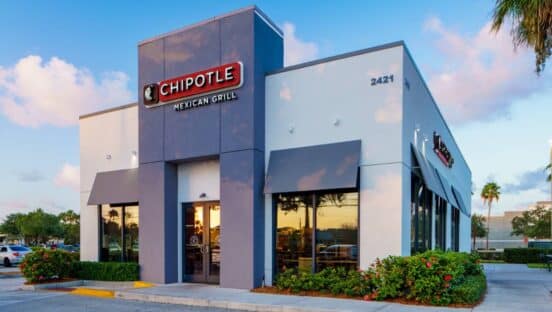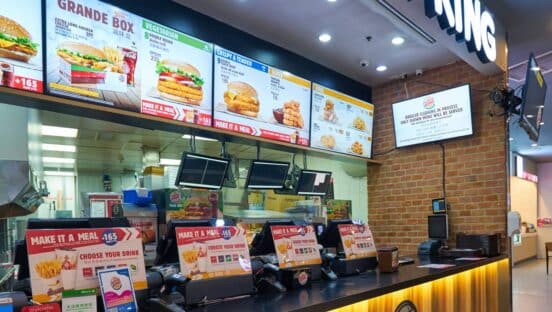It’s true that different brands excel at different things, be it in the area of nutritional offerings, customer service, or speed.
It’s true, too, with drive-thru service; some brands perform better than the rest. And this year the QSR Drive-Thru Performance Study focuses on seven brands as a benchmark group that have consistently, year after year, risen to the top of the heap in drive-thru performance.
Drive-thru performance was first studied in 1998 to gauge the speed and accuracy of fast feeders and encourage the industry to improve its service. And improve it did:
- In 1998, the fastest quick-service drive thru, Long John Silver’s, averaged a time of 159.1 seconds, and Whataburger topped the accuracy rankings with 86.7 percent of its orders served correctly.
- By 2003 the top speed performer, Wendy’s, had improved the mark by more than 40 seconds, with a time of 116.2 seconds, while tops in accuracy went to Chick-fil-A at 97.3 percent correct orders, an improvement of more than 10 percentage points.
- By 2009, the last time speed and accuracy were studied, Wendy’s was once again tops in speed with 134.1 seconds, while Chick-fil-A was best in accuracy with 96.4 percent of its orders correct.
Over the years, a select number of chains were consistently outperforming the rest of the study group year in and year out. This benchmark group defines drive-thru performance for the industry and sets the bar quick serves can use to judge their drive-thru operations. That’s why these companies are the focus of the Drive-Thru Performance Study, which is co-owned by QSR® magazine and Insula Research.
The benchmark group includes the top six performers over the life of the study—Burger King, Chick-fil-A, Krystal, McDonald’s, Taco Bell, and Wendy’s—plus a regional chain that has also performed well historically. This year that chain is Del Taco, although QSR and Insula will rotate that selection in future years.
The New Approach to Speed
The high-water mark for speed remains Wendy’s 116.2-second performance in 2003. Since then, drive-thru service times have slowed a bit, though the brands that compose the benchmark group are fairly consistent with service time.
This year, Wendy’s is fastest once again with an average time of 145.5 seconds, while Taco Bell is second at 146.7 seconds and McDonald’s has the longest time at 184.2 seconds.
Brian Baker, president of Insula Research, says speed peaked over the course of the last several years of the study, but that customers have different expectations than they used to when it comes to wait times.
“It was interesting that 81.6 percent of our researchers said speed was ‘about right,’ and another slightly over 17 percent responded ‘slow,’” Baker says.
“If you look at a lot of the recent consumer data, they seem to infer that speed is no longer as critical a factor for people going through the drive thru. When I look at this, it’s telling me speed is very important—it’s just now the bar has been raised for our expectations. We are expecting it to be three or four minutes, and if it’s not, I’m dissatisfied.”
Though the benchmark brands have not increased their speed over past years, all the operators who commented for the study say they are working to improve the efficiency of their drive thrus so that the speed can improve.
Taco Bell, for instance, is constantly looking for new tools that will streamline the drive-thru process, says Mike Harkins, vice president of operations for the company.
“We want to make sure that the technology initiatives we use enable our team members—and particularly what we call ‘service champions,’ who are the ones interacting with the customers in the drive thru—to do some of the tasks that they need to do that may [otherwise] take their mind off of engaging with the customer,” Harkins says.
Taco Bell’s approach to speed is ensuring the crewmember operating the drive thru has more time to commit to the customer, and it reflects a focus on time utilization throughout the benchmark group. More are tweaking the customer-service aspect of their drive thrus in order to enhance whatever time the customer has to spend in the lane.
“You have an option as a brand,” Harkins says. “There are things that are happening with technology and other things that are out there that you can certainly improve on [speed]. … You can also take that opportunity to enhance the overall experience with the customer by having your team members engage more with your customers and still keep the time frame the same.”
Kevin Pope, director of operations services at Del Taco, says the Southern California chain considers the time spent at the pick-up window the most important aspect of its drive-thru speed. That explains the company’s internal drive-thru motto, “Food beats car to window.”
He says Del Taco is also focused on using what time it has with the customer to engage with them and ensure they have the best experience possible.
“It’s not just a voice-box anymore, it’s not just, ‘What do you want? Here you go, see you later,’” he says. “Whether we’re taking orders outside personally or inside on a headset, we’ve got to make sure that smiles can be seen and heard.”
Howard Nelson, vice president of operations for Krystal, says his company’s drive-thru cashiers go through a certification process before taking the reins. Certified cashiers receive a $2-an-hour raise as a way to show Krystal’s commitment to superior service in the drive thru.
[pagebreak]
“Once they’re certified, they’re sharp looking, they have a great personality, they’re outgoing, you can feel their presence through the speaker,” he says. “We hear people say, ‘Boy, I can hear you smiling through the speaker.’”
The benchmark group also excels at making sure nearly every word coming through the speaker can be heard. According to the QSR Drive-Thru Performance Study, 95–96 percent of the units at six of the quick serves surveyed had “clear and understandable” speaker interactions. Krystal’s clarity rate was 89.2 percent.
The bad news may be what is, or is not, being said. Baker is quick to point out that customer-service numbers are not as high as he expected them to be from the top performers.
“When you look at the numbers for the customer service … we had 38 percent say they thought service was ‘very friendly,’” he says. “Another 38 percent said ‘pleasant.’ And about 16 or 17 percent said ‘average.’”
Baker says the numbers show some room for improvement, particularly in the number of employees who said “please” (53.7 percent overall), the number of employees who said “thank you” (86.6 percent), the number of employees who made eye contact (81.4 percent), and the number of employees who had a “pleasant demeanor” (78.6 percent).
No More Fat and Sassy
Customers have all been there: After placing their order in the drive thru, they pull around the corner to find a sign in the first window reading, “Please pull up to second window.”
Not only is this scenario confusing for them, it raises the question: Just how many windows does a drive thru need?
Krystal’s Nelson says the quick-serve industry got “fat and sassy” before the recession, building bigger stores with more dining-room space and more drive-thru windows. But with the economy forcing operators to reconsider their build-out costs, the future lies in trimmed fat, streamlined operations, and doing more with less.
“We build efficiency right there in the window area with the single-window drive thru, and get just as much, if not more, efficiency out of that window with people working together,” he says, adding that all future Krystal units will have just one window.
“They’re both working as a team, getting drinks and bagging and helping the managers consolidate and get the food out,” he says.
Harkins says a one-lane drive thru helps improve the perception of speed, and a one-window drive thru helps improve the actual speed.
“Based on the volume, and based on the number of cars that go through your peak hour, we believe we can be faster in the overall time (which is different than perception) by having two people in one window moving the process through that way,” he says.
John Miologos is executive vice president of architecture, engineering, and construction management at WD Partners, a foodservice design firm. He suggests an order station that allows customers to pay instantly with their credit cards.
“If at some point in time … the use of credit overcomes the use of cash, then I would think that there’s a possibility of eliminating one of the windows,” Miologos says. “[That’s] the reason you have two-window systems in many [quick serves] … and the cash transaction is probably the limiter in the speed.”
Another possibility in limiting the number of drive-thru windows is stationing an employee outside with a POS tablet to take orders. This technique, which also helps bust lines, is being tested by many quick serves in an effort to shoulder the workload for the drive-thru workers.
Pope says Del Taco positions a crewmember outside most of its drive thrus, regardless of its traffic. But he says the technology still isn’t there for an outdoor crewmember to do anything more than taking orders.
Addressing the Look
All of the experts stress that the exterior appearance of the lane is critical in supporting the drive thru.
The benchmark group is setting the standard for exterior appearance. Chick-fil-A scored 99.7 percent with “favorable” exteriors, while Taco Bell came in at No. 2 with 99.3 percent. The lowest score was Burger King at 95.3 percent, still a statistic to be proud of.
“We want the building to be appealing, not just the drive thru—that curb appeal that makes someone pull in,” Harkins says. “Then what we want our drive thru to be is very customer friendly. So, canopy over the order-taking point, a canopy over the window in case it’s raining or there’s bad weather. We look to make sure our drive thru is very functional, and our overall building is what is appealing to our customers.”
Canopies and attractive landscaping were also mentioned by all the operators we talked to as important characteristics for the drive thru’s appearance.
Another element of the drive thru that several operators employ to support both their drive-thru appearance and convenience is the presell menuboard. Presell boards let customers determine their order while waiting in line, before they approach the order station.
Krystal’s Nelson says presell menu-boards are important for the drive-thru experience. He says Krystal has presell boards in place in most of the chain’s units.
In fact, Nelson has boiled the drive thru down to a signage science.
“By the time they get to the menu-board, you’ve got them on the lot with a big message up front, either on your message board or the [point-of-purchase message] on your window,” he says.
[pagebreak]
“Your presell board moves them in the direction you want to improve, either the profitability or add-ons, and by the time they get to the third step—they get there to order—you’ve led them where you want them. Ideally, that’s where we see it.”
The Bells and Whistles
One of the newest features of the drive-thru industry is the order-confirmation board. Once employed by a select few operators, the order-confirmation board has made major inroads into the quick-service industry. McDonald’s, in fact, has order-confirmation boards in place in 96.7 percent of its units, according to the Drive-Thru Performance Study.
But not every member of the benchmark group has gone all in with the boards. Chick-fil-A has order-confirmation boards in place in only 8.6 percent of its units. Del Taco, meanwhile, has the boards in 20.8 percent of its stores, while Taco Bell has them in 46.8
percent.
Baker says low confirmation-board penetration could reflect a brand’s faith in its customer service. He points to Chick-fil-A, which is known for the time it commits to teaching customer service.
“In their case they probably feel like they can have a little greater influence on the person who’s actually delivering the food for them at the drive-thru window, and probably have focused a little bit more energy on working with that group on how to interact with the people and on what to say and on how to check the order,” he says.
Still, many members of the benchmark group say the boards are critical components to the industry moving into the future.
“The confirmation board, to me, is one of the single biggest and best innovations that I think has been developed for drive thrus,” Nelson says. “I think it builds confidence that they’re more likely to get their orders right.” Krystal has confirmation boards in place in 50 percent of its units.
Once order-confirmation boards are in place, operators must ask themselves what they wish to have displayed on the screen.
Jeff Bonner is vice president of operations and training at Culver’s. The Prairie du Sac, Wisconsin–based brand is not a member of the benchmark group, as its made-to-order format sets it apart from typical quick serves. But in 2008, the only year it was researched for the drive-thru study, it came in second place in order accuracy, with 95.2 percent of its orders served correctly.
Bonner says today’s technology allows quick serves to dress up their order-confirmation boards to be as visually appealing as possible, which he says Culver’s explored when the company started to roll out the technology.
“Through our research, when we first started implementing [order-confirmation boards], we put all the bells and whistles on there—the graphics, the words, trying to sell you on something,” Bonner says.
“We were more geared toward the marketing and merchandising element more so than the order confirmation.
“Since then, we have evolved; in the last couple of years, we have done some research with our guests and looked at the industry-wide research. They say, ‘Hey, all I’m really interested in is my order getting made right.’ So we kind of backed off of that mindset and put more emphasis toward the visual aid of confirming their orders more so than merchandising.”
Harkins says Taco Bell is in the same boat. Instead of using the order-confirmation board to do the selling, he says the company uses boards that are appealing to customers but still keep distractions to a minimum.
“We’re utilizing it to make sure we can shorten the functional part of the experience for the customer and make it more of the experiential part of having the service champion and our people and our restaurants and their personalities shine,” he says.
“We’re not trying to have the piece of equipment or POP necessarily sell our product, we’re trying to have the engagement of the employee sell our product.”
Still, Harkins says Taco Bell keeps an open mind regarding new technologies.
“If there’s something out there that matches our operating platform that can increase the customer experience,” he says, “we’ll be looking at it.”
Who Are the Winners?
Harkins’ sentiment may say the most about this year’s benchmark group—if a specific component of the drive thru matches their operating platform, chances are these top brands will invest in making themselves the best at it.
And these seven brands have certainly managed to become the best at much of the drive-thru experience.
Baker says that aside from customer service, there were “very few glaring weaknesses” from the benchmark group studied this year.
“Looking at the overall performance, it does affirm that it is a very, very strong group,” Baker says.
“I would encourage all other chains that are interested to benchmark against these metrics that we’ve done with this group. They’ve consistently demonstrated that they are ahead of the class.”













